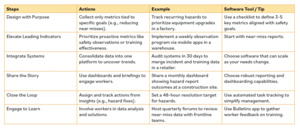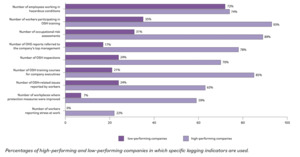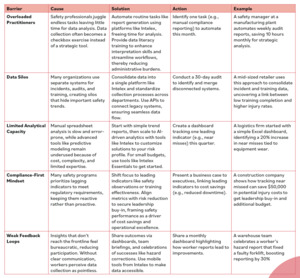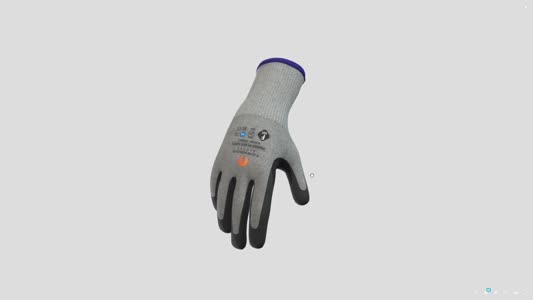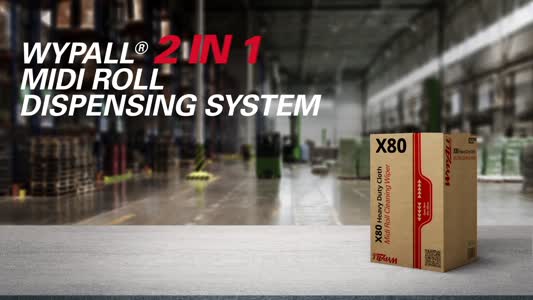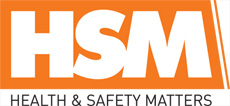
 |
Mark Sennett
Managing Editor |
 |
Kelly Rose
Editor |
| Home> | Managing Health & Safety | >Safety Software & Documentation | >Turning EHS data collection into meaningful action |
Turning EHS data collection into meaningful action
20 October 2025
In the evolving field of occupational safety management, there is an abundance of data. Scott Gaddis explains how you can turn this information into meaningful action.

In the rapidly evolving field of occupational safety management, there is an abundance of data generated from various activities. Workplace inspections, safety audits, near-miss reports, incident investigations, training sessions, and compliance checks create a continuous stream of information. Advanced technologies such as sensors, wearable devices, mobile apps, and integrated software platforms have simplified the process of capturing metrics, populating dashboards, and producing detailed reports. This surge of data promised a transformation in safety management, allowing organisations to predict hazards, proactively manage risks, and make evidence-based decisions in real time.
However, for many organisations, this vision has not yet been realised. While data collection has improved significantly, translating that information into actionable insights often proves challenging. Safety professionals frequently find themselves inundated with sprawling spreadsheets, disconnected systems, and compliance-driven reports that fail to answer a crucial question: What does this data reveal that we didn’t already know? Consequently, there is a persistent gap between the promise of data-driven safety and the reality of information overload, where raw data accumulates faster than meaningful insights can be extracted.
This article offers a comprehensive roadmap for safety professionals and organisational leaders. It highlights the difference between data collection and insight, identifies the challenges organisations face in moving beyond metrics, and outlines actionable steps to convert information into narratives that drive change. By emphasising purpose, integration, and collaboration, safety leaders can transition from merely collecting data to fostering a culture of shared accountability, proactive risk management, and sustained safety improvement. This journey from data to insight is not solely about technology; it is about empowering individuals to act decisively and collaboratively.

The data trap: Why collection Isn’t enough
The belief that more data inherently leads to better safety outcomes is deeply ingrained in many organisations. Dashboards filled with colourful charts, meticulously completed forms, and comprehensive audit logs create an impression of maturity and diligence. However, without purpose, analysis, or context, this data becomes “digital clutter,” which can be a liability rather than an asset.
Many safety programs fall into the trap of amassing data without a clear goal. Often, it’s driven by compliance requirements or the assumption that more information equals greater control. This approach yields little value. Safety managers dedicate hours to populating dashboards and generating reports, only to find these efforts confirm known issues without offering new solutions.
The critical question “how does this data help us reduce risks, engage workers, or prevent incidents?” remains unanswered.

The consequences of directionless data
Data, without interpretation, remains noise, not insight. Collecting data without a clear strategy has significant consequences:
- Decision Fatigue: Sorting through endless metrics to identify what matters most is time-consuming and mentally exhausting, diverting focus from strategic priorities.
- Missed Opportunities: Unanalysed data hides emerging risks, behavioural patterns, or systemic issues, undermining proactive safety efforts.
- Worker Disengagement: When frontline employees see no tangible outcomes from their contributions, like hazard reports or near-miss submissions, they lose trust in the system, leading to reduced participation and a weaker safety culture.
This cycle is reactive: collect, report, comply, repeat. It prevents organisations from using data proactively to identify and mitigate risks before incidents occur.
How to break the cycle
Data overload poses a significant challenge for safety programs. Safety practitioners, already stretched thin, struggle to manage the sheer volume of information that’s collected. At the same time, frontline workers, who are closest to workplace hazards, may feel their input is overlooked, further eroding trust and engagement.
Meanwhile, regulatory demands continue to evolve, such as the stricter OSHA standards or the new EU ESG (environmental, social, and governance) reporting requirements. Organisations that focus solely on traditional compliance metrics may overlook emerging risks. This can leave them vulnerable to penalties or reputational damage.
To break this cycle, safety programs must shift from gathering data to curating insights. This requires a strategic approach: collecting only what is necessary, analysing it effectively, and communicating findings in ways that inspire action at all levels of the organisation.
The goal is not more data. It’s better decisions that drive safety performance and operational excellence.
What Is insight?
Insight is not a metric, a report, or a snapshot of past performance. It is the synthesis of data into a coherent, actionable narrative that reveals why something happened, what it means, and how to address it. In the context of safety, insight transforms raw information into foresight, enabling organisations to anticipate risks, address root causes, and align safety efforts with broader operational and ESG goals. Characteristics of True Insight When harnessed effectively, insight delivers:
- Clarity Between Symptoms and Causes: It distinguishes surface-level issues (e.g., high incident rates) from underlying drivers (e.g., inadequate training, equipment failures, or cultural factors).
- Foresight Over Hindsight: While lagging indicators (e.g., injury rates that measure past incidents) describe what has happened, insight leverages leading indicators (e.g., safety observations, near misses, or training completion rates) to predict and prevent future incidents.
- Systemic Connections: Links data across incidents, inspections, training, and environmental metrics to uncover patterns that span departments, locations, or processes.
- Behavioural Context: Ties metrics to human behaviours, revealing how cultural, operational, or leadership dynamics influence safety outcomes.
- Shared Ownership: Makes data accessible and actionable for everyone, from executives to frontline workers, fostering collaboration and accountability.
In my book, From Participation to Partnership: A Journey to Safety at the Frontline, I emphasise the idea that “we don’t do safety to people, we do it with them.” Insight connects abstract metrics with the real experiences of workers, fostering a shared understanding. For example, when a worker’s hazard report leads to an equipment upgrade that prevents an injury, they see their impact, boosting engagement and creating a virtuous cycle of trust, participation, and continuous improvement. True Interdependence.
Six Steps to an Insight-Driven Safety Culture
To transform safety data into impact, follow these actionable steps, each with specific examples and tools to guide implementation:

Emerging Trends in Safety
As safety evolves, emerging technologies and trends are reshaping how organisations generate insights. Artificial Intelligence (AI) and Internet of Things (IoT) devices, like wearable sensors, enable real-time risk prediction. These tools integrate with platforms like Intelex, offering precise analytics without requiring advanced expertise.
Additionally, ESG priorities are driving safety to align with sustainability goals, such as reducing environmental incidents or improving worker well-being. Stricter regulations (e.g., OSHA’s updated standards for heat stress) will make proactive, insight-driven safety essential for compliance and competitiveness.
Leadership’s Role in Making Insight Actionable
Insight reflects leadership, not just technology. Effective safety leaders don’t just report data; they interpret it, share it, and inspire action. They build trust by showing that data collection leads to outcomes, not paperwork.
- Listen to the Frontline: Engage workers in data analysis, valuing their expertise.
- Communicate Clearly: Translate metrics into actionable message.
- Act Decisively: Ensure insights drive changes, like equipment upgrades or training improvements.
Leaders foster a culture where mistakes are learning opportunities, not blame. By encouraging hazard reporting without fear, they enrich data and enable continuous improvement.
Conclusion: Use Data to Inspire Action
The goal of safety is not to amass data; it’s to create impact. Insight bridges raw metrics to meaningful change, preventing incidents, engaging workers, and aligning with operational and sustainability goals. Platforms like Intelex and principles from “Participation to Partnership” empower organisations to make the invisible visible, turning numbers into narratives that inspire action. As AI, IoT, and ESG priorities evolve, insight-driven safety will become standard, enabling precise risk prediction and integrating safety into digital transformation.
About the Author
Scott Gaddis is the VP of Safety and Health at Intelex. Scott is a strategic leader with 30+ years of experience guiding organisations in EHS initiatives, regulatory compliance and risk management. For more information, visit www.intelex.com/
References
Gaddis, Scott. 2024. From Participation to Partnership: A Journey to Safety at the Frontline. Charleston, SC: Palmetto Publishing Pawłowska Z. Using lagging and leading indicators for the evaluation of occupational safety and health performance in industry. Int J Occup Saf Ergon. 2015;21(3):284-90. doi: 10.1080/10803548.2015.1081769. PMID: 26647949; PMCID: PMC4685598
